If you’re planning to travel to Japan one must-try activity is to try a traditional full-length garment called a kimono. It’s a fun cultural experience to try with friends and family to make your trip to Japan more worthwhile. You can find lots of rental places across Japan and I’ll be sharing everything you need to know about a kimono rental for when you travel to Japan. From the best places to rent, where to rent, and helpful tips for your kimono rental experience. If it’s your first time visiting Japan also make sure to read these 10 must-know tips for your Japan trip!
Disclaimer: This post may contain affiliate links, which means I get a small commission if you make a purchase (at no extra cost to you). It’s one of the ways I can keep producing free resources and guides for my readers. Thank you for your support! Refer to the Disclosure Policy for more details.
Short on time?
My top recommendations for your Japan travel itinerary include:
💸 Save money: Tokyo Subway Pass gives you unlimited travel for 24, 48 or 72 hours at a discount in Tokyo.
🗺️ Tours: Klook (very popular in Japan), GetYourGuide, and Viator.
🛌 Accommodation: Find the best deals on stays in Japan with Booking.com.
📍 Recommended Activities:
💄 Explore Tokyo from above at Shibuya Sky
🎏 Try an adventure-fuelled day trip at Universal Studios
🌷 Step into another world at the TeamLab Planets – an immersive exhibition!
🛤️ Getting Around Japan: Order a Suica card to use public transport (buses, trains) and pay at convenience stores in Japan.
🚄 Traveling across Japan: The Japan Rail Pass provides unlimited rides on JR train lines and most Shinkansen (bullet trains).
🏥 Travel Insurance: World Nomads
📶 Staying Connected: Get instant access to data with Airalo eSIM.
Background
What is a Kimono?
The term ‘kimono’ translates to “garment” with ki (着) which means “to wear” and mono (物) which means “thing” or “object”. A kimono is a beautiful full-length robe that was originally worn by the Japanese on a daily basis. Nowadays kimonos are mostly used by locals during formal events such as festivals, tea ceremonies, and graduation programs.
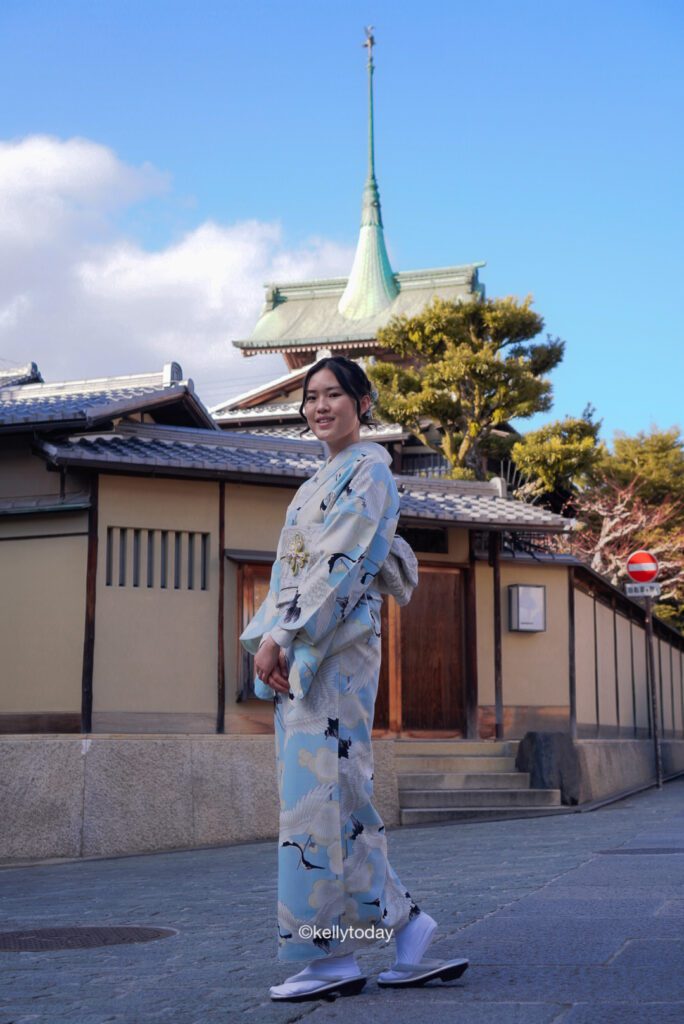
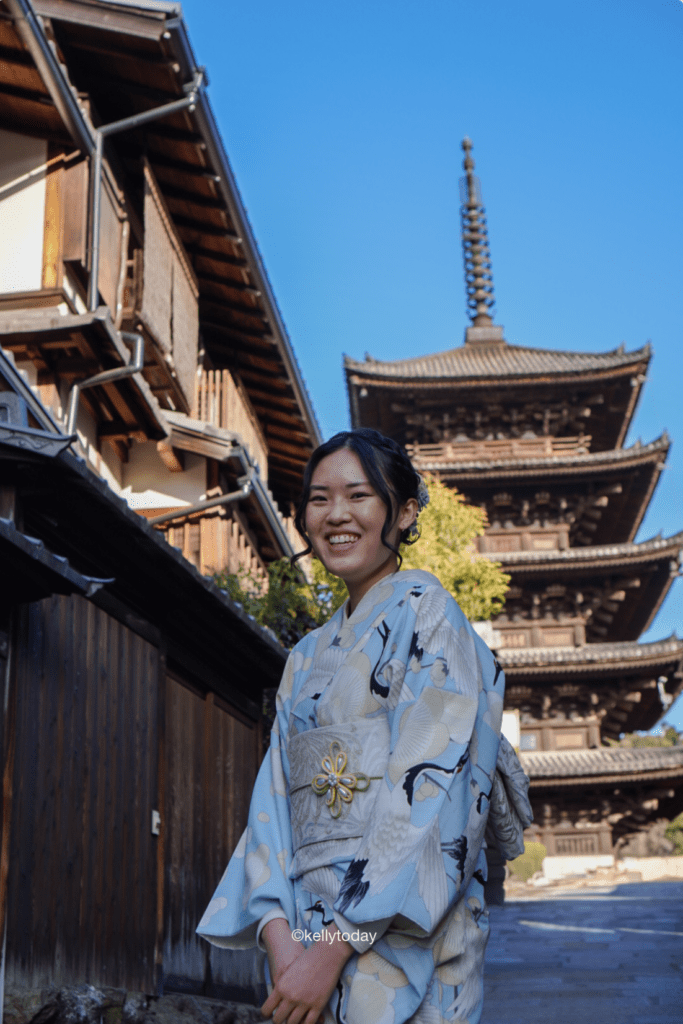
Types of Kimonos
Did you know there are different types of kimonos? This includes the tomesode (formal wear for married women), yukata (light wear for summer), furisode (worn by unmarried women), and many others. The standard for most kimonos is straight T-shape robes that reach the ankles with attached collars and long sleeves. When dressed in a kimono it is customary to always wrap it around the body with the left side over the right (except when dressing the dead for burial), and is secured by a sash (obi), which is tied at the back. It is then finished with split-toe socks (tabi) and traditional footwear (geta or zōri).
Tips for Kimono Rentals in Japan
Kimono Rental Bookings
Bookings in advance are essential to save money but also to ensure you don’t miss out on securing a rental booking. If you choose to do just ‘walk in’ to a rental store you’ll have to consider if the place has English-speaking staff and if the place offers ‘walk-in’ appointments. Some rental places only accept a certain amount of bookings per day which can be common in high-traffic places in Japan. Worst case you might have to wait a long time or you won’t be accommodated at all. So remember to book ahead of time!
I recommend booking an early morning time slot so you’ll have a wider selection of kimonos before they get rented by other customers. Think of it as ‘first comes, first served.’ You will also have more time to wear the kimono without feeling rushed exploring and taking photos before you have to return it at the end of the day.
Best Weather for Kimono Rentals
Before you make a rental booking be sure to check the weather forecast during your travels. The worst thing to happen is booking a time when the weather is rainy, overcast or too hot and humid during the summer.
How to Wear a Kimono
The process of putting on the kimono takes over 20 minutes as they have to layer the different clothing pieces. It can be a tight fit so make sure you wear appropriate clothes under the kimono. For winter I recommend wearing thermal clothing to keep you warm under the kimono. I recommend UNIQLO’s heat-tech leggings and tops. For summer I recommend wearing light layers and avoiding wearing collared or high-collared shirts. One last tip! I recommend stopping at the restroom before you get your kimono fitting done. It’s doable to go to the restroom but it’s just an uncomfortable experience you’d rather avoid.
Kimono Rental Additional Services
Some services will offer hair and/or makeup services for additional add-on costs. When deciding on a kimono rental consider package options that include hair or make-up services. When I rented in Kyoto I got my hair done and also got hair accessories as part of my rental package.
Where are the best places to rent a kimono?
Depending on your budget and the time you have for your trip there are a variety of places for kimono rentals in Japan. My personal recommendation to rent a kimono includes Asakusa, Gion, Arashiyama, Kawagoe, and Kamakura. Personally, I found the ancient city of Kyoto as the quintessential place to try this cultural activity. However, if you’re short on time you can explore Tokyo by heading to Asakusa with its picturesque temple and shrine as well as historic Edo-era architecture. This place serves as the perfect backdrop for your photos.
As a general rule, I always recommend choosing places that are close to the attractions you’ll want to explore in the kimono. This is to save time travelling to and from the location. Here are a few personal recommendations on where to rent a kimono in Japan.
Kimono Rentals in Tokyo

YAE
Hours: Available sessions from 9:30 to 3:30 pm.
Address: Located near this train station.
Yae Kimono Rental is located in Asakusa in Tokyo and provides a variety of luxurious and sophisticated-looking kimono designs. The staff can speak English and Chinese and they’re very friendly and helpful with your kimono rental experience. They also offer group packages for families, girlfriends, and couples which can be cheaper than renting individually. For those interested in getting their photos they also offer a photo shoot experience.

Aiwafuku
Hours: 9:30 am to 18:00 pm
Address: 2-3F NW Building, 1-11-4 Hanakawado, Taito-Ku, Tokyo
This kimono rental is located in Asakusa, Tokyo, and offers a variety of kimono design styles and packages for couples and individuals. What’s unique about this rental store is that they offer a lace kimono, Taisho Roman, and casual furisode options.
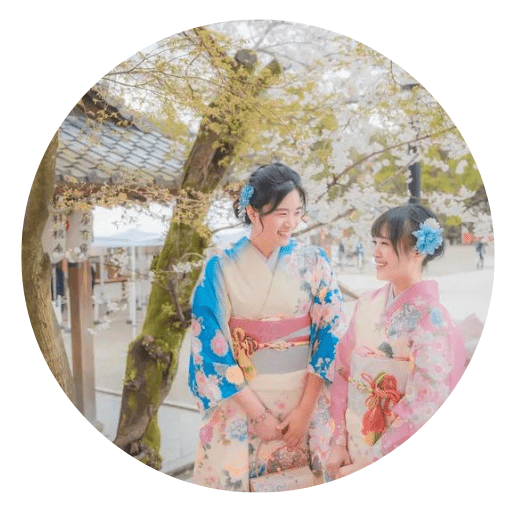
Kimono Miyabi
Hours: 9:00 am to 18:00pm
Address: 〒111-0032 Tokyo, Taito City, Asakusa, 3 Chome−30−2
Locations: Tokyo and Kyoto
If you want an earlier booking than 9:30 am this is a great option to try. The earlier you get your kimono rental done the more time you’ll get to explore and also beat the crowds in around attractions. Kimono Miyabi offers packages for couples, families, groups of 2, and individual rentals. There are also a variety of kimono rental designs and the packages include hair accessories for females.

VASARA
Hours: 9:00 am to 18:00 pm
Address: 2-29-21 Asakusa, Taito-ku, Tokyo
Locations: Tokyo and Kyoto
Vasara offers kimono and yukatas for rental in Asakusa from 9 am the morning. They have a variety of rental packages depending on your budget which can include basic hair styling and accessories. If you book online you’ll also get insurance to protect you from accidents including tearing, ripping, or stains on the kimono.
Kimono Rentals in Kyoto
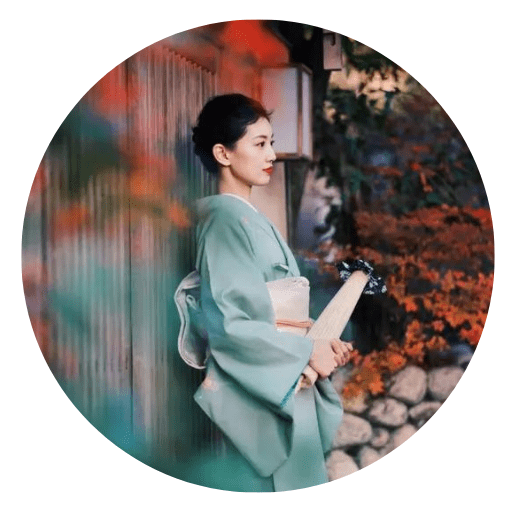
Ouka Kimono Rental
Hours: 10 am to 17:00 pm
Address: 4 Chome-432-13 Gojobashihigashi, Higashiyama Ward, Kyoto, 605-0846, Japan
Choose from over 500 kimono designs at Ouka Kimono in Kyoto. You can select from a variety of kimono styles including lace kimonos, or Taisho roman/retro kimonos. If you’re looking to get professional photos you can also book a photoshoot as part of your rental package.
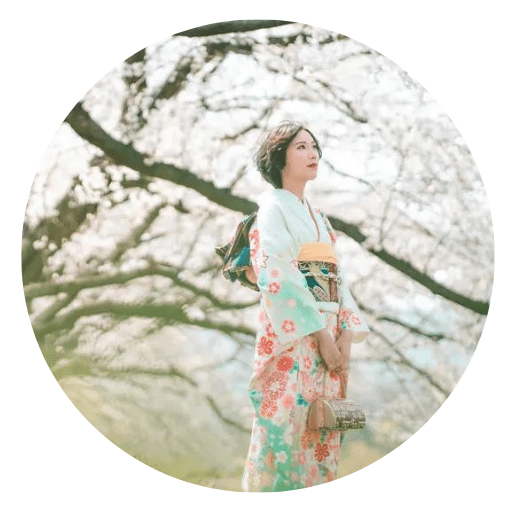
Aiwafuku Kyoto
Hours: 9:00 am to 18:00 pm
Address: 〒605-0079 151 Tokiwacho, Higashiyama-
ku, Kyoto City Hachigen Building 3F (Old building name: Valie Gion Building)
Choose from over 200 kimono designs at Aiwafuku Kimono Rental. This rental place is located in Kyoto and they offer packages for couples or an individual person and include basic hairstyling and accessories to choose from.

Wakana Kimono
Hours: 9:00 am to 18:00
Address: Moonbeauty Gion Building 4F, 300 Gionmachi Kitagawa, Higashiyama Ward, Kyoto, 605-0073
Choose from Wakana Kimono’s collection of high-quality and locally-made kimonos. With packages available for children, couples, and individuals you’ll be treated to gorgeous kimono designs to explore the charming streets of Kyoto. If you’re worried about the language barrier rest easy knowing that the staff can speak English and Mandarin.

Okimono
Hours: From 9:30 am
Address: 569-9 Shiraitocho, Higashiyama Ward, Kyoto, 605-0865, Japan
This rental place is located near Kiyomizu Temple in Kyoto. Their rental packages are catered for couples, children, or individuals with hundreds of kimono designs to choose from. If you’re worried about the language barrier you’ll be happy to hear that the staff can speak Korean, Japanese, English, Cantonese, and Chinese.
👀 Looking for more cultural activities to try in Japan?
Frequently Asked Questions About Kimono Rentals
How long can I rent a kimono for?
Different kimono rentals have different rental options. For most places, it is usually till 6:30 pm and if you return after the stated time you’ll be charged a late fee. Some stores do however offer kimono rentals overnight so check on the store’s services online. For example, Yae Kimono Rental offers a ‘next-day return plan.’
What does a kimono rental experience include?
Select a Kimono
Once you arrive at the rental place you’ll be guided to choose your kimono and accessories (bag). The staff can offer recommendations for you based on your budget or style preferences if you didn’t book in advance. After you’ve organized payment you’ll be guided to an area where they’ll help you dress in the kimono. They will also give you a bag to store your belongings and a tag to identify the bag. Just remember to take your valuables and any other personal items you’ll need.
Hair Styling
After you’ve chosen your kimono and you’ve been dressed up one of the staff. You’ll get your hair styled in a separate room which is usually included in your kimono rental fee. Depending on the place you go, they’ll either have a selection of hairstyles to choose from or you might be able to show a photo of a hairstyle you’d like. Afterwards, you can choose a variety of hair accessories to decorate your hair.
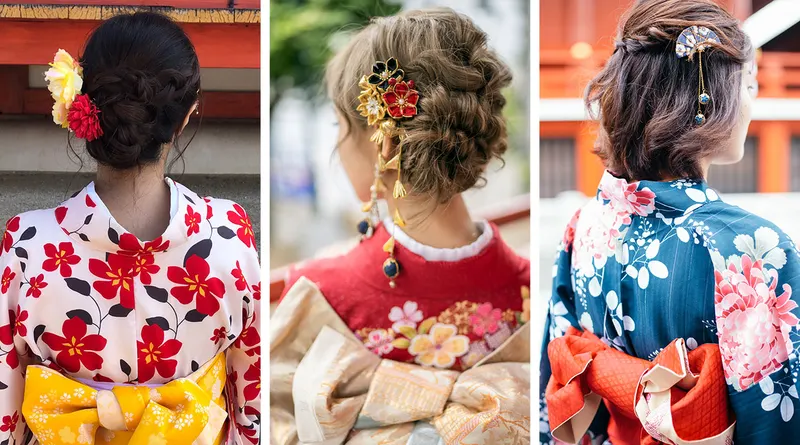
Kimono Rental Return
Be sure to set a reminder when you have to return the kimono. Depending on the rental store’s policies they can charge you a free for late return. It’s also important to make sure you don’t damage the garment with any irreparable stains as you might be required to pay compensation for it.
How long does it take to dress up in the kimono?
It usually takes about 25 minutes for men and 40 to 50 minutes for women (including the hairstyling). However, this depends on when you visit and the number of people who have booked the same time slot or ‘walk-in’ appointments.
What activities do you recommend whilst wearing a Kimono?
Apart from exploring the local streets and checking out the local eateries. You might want to consider doing a photo shoot experience to capture some memories or book a rickshaw service. If you decide on a rickshaw tour you’ll get a local to show you around the area and learn more about the history. If you’re interested in getting professional photos done you can organise this in two ways.
- Book a separate photography session. I recommend checking out a local photographer to show you the local sites and make some memories to take home with you.
- Organise a photoshoot with your kimono rental in a package.
Are there kimono options for tall people?
This depends on the kimono rental place you visit. Generally, kimono pieces can fit up to 180cm for females and up to 195cm for men. If you are taller it’s still possible to find a kimono that will fit you. However, you’ll have fewer design options to choose from or it just might be short for you.
Can I choose my accessories?
The staff at the rental store will often recommend matching accessories for you. However, you have the flexibility to choose what you want to put on your kimono and your hair accessories. Often at the rental places, they will also offer a variety of hairstyles for you to select from up-dos to down styles.
Where can I store my personal belongings?
After you’ve been dressed up in a kimono you can leave all your personal belongings in the rental store. The staff will give you a bag for you to store your items in and a tag to identify them. Just make sure you bring all your valuables and other personal items you’ll need whilst you’re out exploring.
Can males rent kimonos?
Yes, males can try kimonos in Japan. You’ll also be happy to know that a male kimono is a much simpler process to dress, but if you’re on the taller side there might be fewer options for you.
What other traditional Japanese clothing can I rent?
If you visit Japan in the Summer (June to August) you can rent out a kimono which is a lot lighter and thinner material. This is perfect for the hot humid weather you’ll be experiencing in the summer months. Alternatively, you can try on a hakama. This traditional Japanese clothing is worn by shrine maidens or students during their graduation ceremony. If you’re interested in more ‘luxurious’ kimono clothing you can try the furisode which is recognisable from its long sleeves.
If you want a one of a kind dress-up experience there are places like Studio Nanairo that can transform you into a geisha (traditional Japanese entertainer) or oiran (traditional Japanese courtesan). Part of the experience involves a professional makeover with full-on traditional make-up, kimonos, real traditional wigs, obis, shoes, and accessories.
Travel Planning Resources ✈️
Here are my recommendations that I’ve tried personally to make your next trip easier.
Flights WayAway, Skyscanner, and Kayak are the best sites to find cheap flights and great deals. Depending on your personal you should also check your preferred airlines’ websites for comparison to find the best deals from your home country.
Currency In Japan, the currency used is Japanese Yen (JPY) and I recommend withdrawing cash before you arrive in Japan. Cash becomes handy when using it at local stores, ticket machines, and older restaurants.
Power Adaptors Japan uses standard Type A and B adapters which is similar to the US. However, note that the voltage may be different so be careful with your electronics and use a voltage converter. I always recommend buying a universal adaptor so you can use it in any country (great for future travels) and it offers extra ports for USB cables to charge your devices.
Visa: If you’re not a citizen of any of Japan’s exempted countries check if you need a visa. Check the full visa requirements according to your nationality.
Attractions & Tours 🌟 Klook and GetYourGuide are my preferred platforms for local tours and activities in Japan. They make it easy to compare tours, book experiences and the best deals. You can also download their mobile app where you can easily access your bookings on the go.
Accommodation 🛌: I book all my accommodation in Japan through Booking.com. They have a wide selection of accommodations worldwide, with flexible booking options and great deals. They also have a Genius Loyalty program where you can get discounts and benefits on selected stays.
Easy Car Rental 🚗 Get hassle-free car rentals on DiscoverCars with a wide selection, competitive prices, and great customer service. Often it’s cheaper than booking direct and you can compare a large range of suppliers to check if you’re getting the best price.
Stay Connected 📶 wherever you go by easily and affordably purchasing an eSim for all your travels. Thanks to Airalo, you’ll get instant access to data and you don’t need to physically swap a plastic SIM card every time you’re travelling to a new country.
Travel Insurance 🛡️ I use World Nomads for overseas travel insurance. Travel with peace of mind knowing you’ll be covered for unexpected events and plan a worry-free journey.
Camera Gear 📸: If you’re curious about the camera gear I’ve used for my photos find out what’s in my camera bag here.
I hope you found this post helpful and that it inspires you to try this cultural activity in Japan. If you have rented a kimono before would you add any recommendations or tips? Or If you haven’t are you considering renting a Kimono in Japan? Let me know your thoughts below.
Found this helpful? 👇🏼
Support my work by buying me a coffee so I can produce more free content for you.


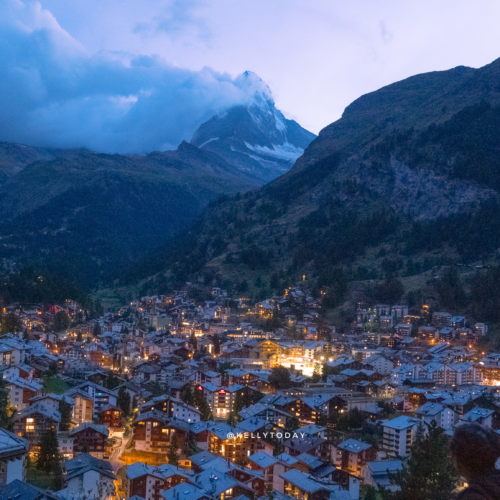
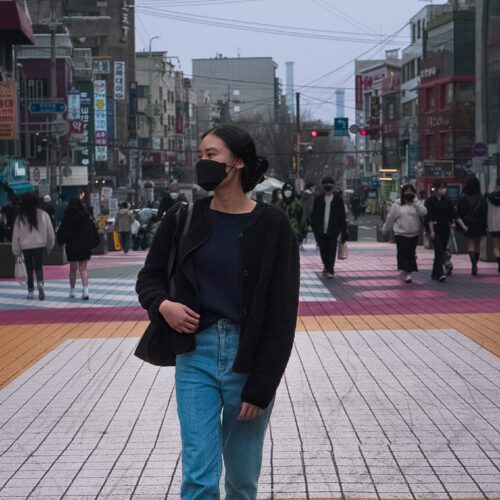
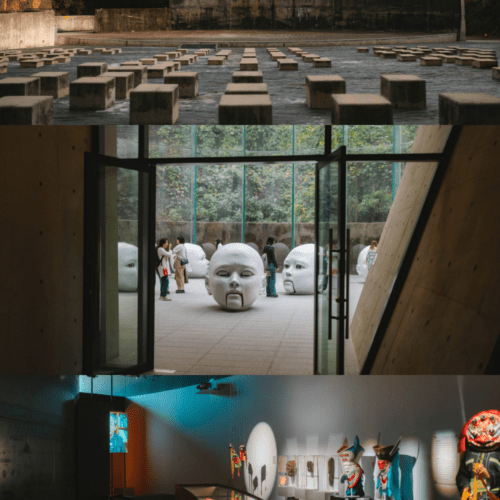

I was really sorry that I did not rent a kimono when we visited Japan. I could have used this post to help me rent one. Good tip to make sure to book in advance for an early time slot to be sure you will get what you want. Kyoto would be a great spot with so many iconic sights for posing for pics. Keeping this for a future trip.
Hi Linda! Sorry to hear that you didn’t get to rent a kimono for your trip! I hope you can visit Japan again and try this fun cultural activity.
This is one of the coolest articles I’ve read in awhile! I had no idea you could rent kimonos in Japan, and now I 100% want to do this when we visit. Pinning this for later!
Hi Chelsea! Glad you found the article on kimono rentals interesting! You’ll definitely have to try this activity for a future trip!
I had no idea you could rent a kimono in Japan! This is such a useful piece of information for travelers. Thanks for sharing!
Hopefully you can try this cultural activity in Japan one day!
Dear Kelly,
I wanted to express my appreciation for your informative blog post about kimono rental, particularly your mention of Ouka Kimono. Your insights have been incredibly helpful.
Could you advise on the best time to book a photographer? Is reserving one for an hour after the rental booking time suitable for a group of four? I’m facing difficulties with Ouka Kimono’s contact form, preventing me from reaching out directly.
Warm regards,
Rachel
Hi Rachel, I really appreciate you finding my post helpful. Generally I would say in the morning or around sunset would be great times to book a photographer. However it ultimately really depends on the times available with the photographer. You’d would personally have to organise this yourself. In terms of one photographer being suitable for a group of four you’d have to ask yourself if this is enough time to get all the photos you want as a group or for yourself only you can decide this. Also please note that I am not personally responsible nor do I get paid to organise photography services in Japan. I’m only recommending services that you’d could use. Any contact issues you’re having with the photographer is between yourself and the person of interest. I’d recommend looking into other photographers if there is an issue with reaching out to a certain photographer. I hope this helps.
All the best,
Kelly
This was such a helpful post! I’d love to wear a Kimono while visiting and you’ve provided pertinent information.
Lovely to hear you found the information helpful! I hope you can visit Japan one day!
I honestly had no idea renting was possible, this makes it even easier and I can get to try out many different outfits, very helpful article. Can’t wait to visit Japan.